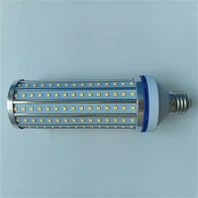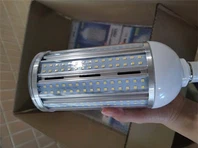Power Lines Transitioning Underground: How it Affects You
I. Technical Dimension: Enhanced Reliability, but Increased Repair Complexity
Significantly Reduced Failure Rate: European and American operational data show approximately 50–90 faults per 100 miles per year for overhead lines, compared to <10 faults for underground cables. Voltage sags and outage durations are substantially reduced.
Greater Disaster Resilience: Unaffected by extreme weather such as typhoons, wildfires, and ice storms. Iceland, Japan, and California all list "disaster prevention" as a primary driver for undergrounding.
Lifespan and Overload Capacity: XLPE cable design life is 40–50 years, superior to overhead lines' 25–35 years. However, overload capacity and scalability are weaker. Fault location and repair times are, on average, 2–5 times longer than for overhead lines.

II. Economic Dimension: High CAPEX, Low OPEX, Total Social Cost Requires "Whole-Life" Accounting
Cost Multiplier: The unit cost of 400 kV AC cables is about 3–10 times that of overhead lines; it can reach 6–8 times in dense urban residential areas, and about 1.5–2.5 times in rural plains.
O&M and External Costs: Eliminates needs for tree trimming, lightning protection, and anti-theft measures. Life-cycle Operation and Maintenance costs are 30–60% lower. Land value depreciation along the line corridor decreases, and insurance payouts and outage losses are significantly reduced.
Impact on End-User Electricity Prices: Calculations from Germany and the UK show that if 20% of high-voltage lines nationwide were placed underground, residential electricity bills would increase by only about 1% (annually €2–14), accounting for <0.3% of the bill.
III. Social Dimension: Public Acceptance Becomes a "Limiting Factor"
Surveys from the European BESTGRID project indicate that the main reasons for opposition to overhead lines are "visual pollution" and "property devaluation." Undergrounding can accelerate project permitting by 15–30%, but only if all utilities are buried simultaneously; otherwise, aesthetic benefits are significantly diminished.
Construction Period Conflicts: In built-up urban areas, road and green space excavation can cause short-term noise and traffic congestion, easily triggering resident protests. Conflicts are smaller in new development areas where simultaneous laying is possible.
IV. Environmental Dimension: Win-Win for Landscape and Ecology, but Carbon Footprint Requires Refined Management
Visual Impact and Biodiversity: Eliminates towers and guy wires, protecting skylines in scenic areas. A Union for the Co-ordination of Transmission of Electricity survey of 19 countries concluded: "Public perception of underground cables in cities is significantly more positive than for overhead lines."
Electromagnetic Fields (EMF): After burial at a depth of 1–1.5 m, surface EMF intensity is only 10–20% of that from overhead lines, greatly reducing health disputes.
Carbon Emissions: The carbon footprint from cable manufacturing is 30–50% higher than for conductors. However, over their entire life-cycle, due to maintenance-free operation and lower losses, this can "break even" or even be better than overhead lines. An Icelandic case study showed HVDC underground line loss rates <1%/1000 km.
V. Policy & Global Practices: From "Demonstration" to "Mandatory"
The EU's TEN-E Regulation 2022 requires new cross-border corridors to prioritize underground/subsea solutions. Germany, the Netherlands, and Denmark have implemented "no pylon" policies for 380 kV lines.
Finland's distribution network operator Caruna invested €360 million from 2015-2018 to convert 100% of medium-voltage overhead lines in southwestern Finland to underground cable, reducing the system SAIDI by 40%.
Asian Approach: Core areas in Shenzhen and Shanghai, China, have 100% undergrounding for new 10 kV lines. Japan's Kansai Electric Power plans to achieve a 40% undergrounding rate by 2030 to address typhoons and tourism landscape needs.
North American Progress: Under wildfire litigation pressure, California's PG&E mandated the undergrounding of 10 kV distribution lines as a safety investment post-2020, targeting 2,000 new km by 2030. New York State implemented a fully underground upgrade for the 138 kV network on Manhattan Island.
VI. Trade-offs and Trends
Urban and Scenic Sensitive Areas: Undergrounding has shifted from "optional" to "default." The cost increment is gradually being internalized through the concept of "whole-life social cost."
Rural Long-Distance Sections: Still predominantly overhead, but adopting hybrid models-localized undergrounding in ecological reserves, tourism corridors, and high thunderstorm areas-to balance cost, benefit, and acceptability.
Technological Evolution: 220 kV XLPE cables are commercially available, 500 kV wet/dry terminations are mature. Subsea HVDC enables transnational "supergrids" (e.g., North Sea Wind Power Hub). The global undergrounding rate is projected to increase from the current ~10% to 20–25% by 2035.
In a nutshell: Power line undergrounding, driven by the core logic of high reliability, lower life-cycle costs, and high social acceptance, is transitioning globally from demonstration phases to scaled implementation, becoming a definitive trend in grid upgrades for urban and sensitive areas.








